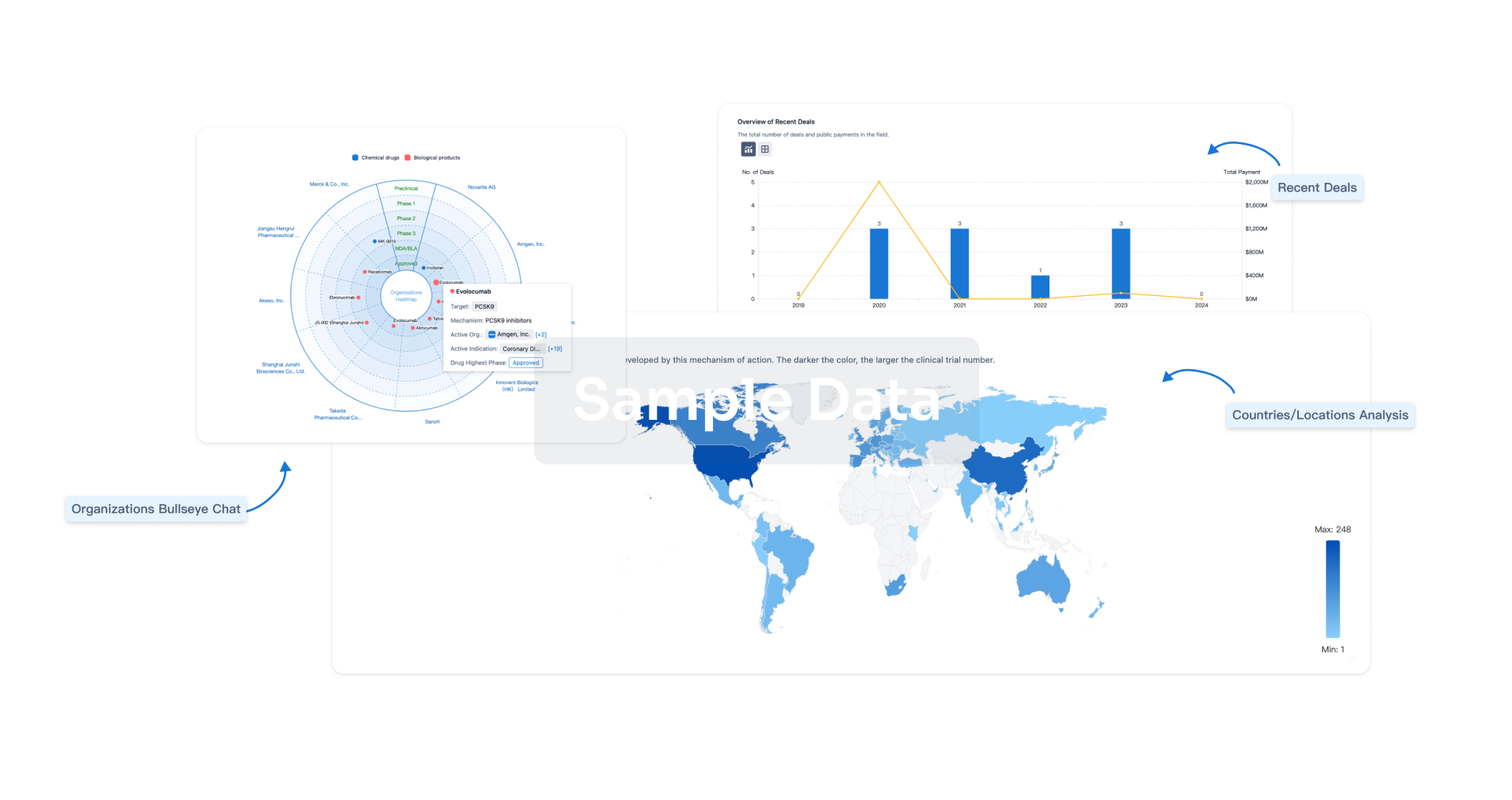Request Demo
Last update 08 May 2025
TP53I3
Last update 08 May 2025
Basic Info
Synonyms NADPH:quinone reductase PIG3, p53-induced gene 3 protein, PIG3 + [5] |
Introduction Catalyzes the NADPH-dependent reduction of quinones (PubMed:19349281). Exhibits a low enzymatic activity with beta-naphthoquinones, with a strong preference for the ortho-quinone isomer (1,2-beta-naphthoquinone) over the para isomer (1,4-beta-naphthoquinone). Also displays a low reductase activity for non-quinone compounds such as diamine and 2,6-dichloroindophenol (in vitro) (PubMed:19349281). Involved in the generation of reactive oxygen species (ROS) (PubMed:19349281). |
Analysis
Perform a panoramic analysis of this field.
login
or

AI Agents Built for Biopharma Breakthroughs
Accelerate discovery. Empower decisions. Transform outcomes.
Get started for free today!
Accelerate Strategic R&D decision making with Synapse, PatSnap’s AI-powered Connected Innovation Intelligence Platform Built for Life Sciences Professionals.
Start your data trial now!
Synapse data is also accessible to external entities via APIs or data packages. Empower better decisions with the latest in pharmaceutical intelligence.
Bio
Bio Sequences Search & Analysis
Sign up for free
Chemical
Chemical Structures Search & Analysis
Sign up for free